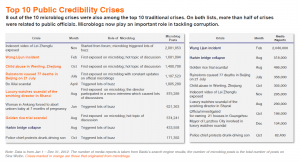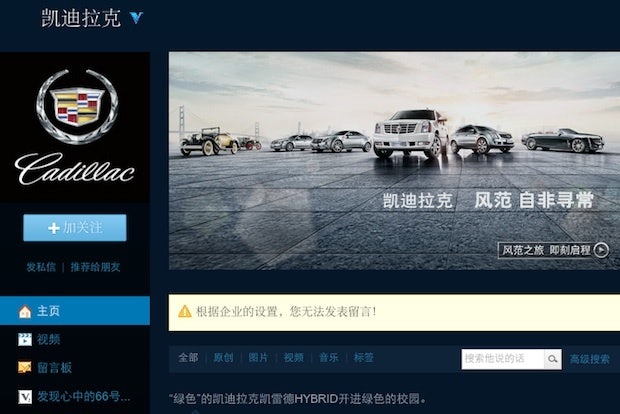“Responding Within 8 Hours Of A Crisis Significantly Affects Its Impact”#

CIC and Ogilvy Public Relations recently joined forces for the “2012 Crisis Management in the Microblog Era” white paper, an analysis of 50 Chinese brand crises that unfolded online last year. Along with a number of useful case studies, the study came to important conclusions, among them that responding to a crisis within the first 8 hours is more effective at controlling it, shortening its duration, and curbing its overall negative side effects. According to Debby Cheung, President of Ogilvy & Mather Group, Shanghai and Managing Director of Ogilvy PR China:
Knowledge and preparation in online crisis management are necessary for corporate communications departments in the microblog era. It became clear in 2012 that microblogs are now the main platform for disseminating news and guiding public opinion. How far a crisis spread and how long it lingered on microblogs determined the crisis’ severity. If the news isn’t on Chinese microblogs, then it hasn’t reached crisis level yet.
In this year’s ranking, eight of the top 10 crises registered on both microblogs and traditional media. In the public credibility category, more than half of the crises were related to public officials, as Chinese microbloggers have increasingly become online vigilantes in exposing and targeting government corruption. According to the top 10 personal crises ranking, Weibo is a double-edged sword -- able to amplify personal influence or destroy an individual’s reputation and affiliated organization. Eight out of the 10 brand crises were related to food safety as Chinese consumers become more health-conscious.
CIC CEO Daisy Zhang, commented that
In 2012, crises in the microblog era contained similar trends as those in 2011, including the communication speed, channels, tones, and feedback, while new characteristics have also emerged. We chose 50 brand crises based on how much buzz it created on microblogs as trending topics and conducted an inductive analysis of them. We hope the business implications offered in this report will help companies to better manage crises on microblogs with flexibility.
Additional key findings of the white paper:
1. The shorter the response time, the better#
If a brand responds within eight hours, the crisis duration and negative buzz will be the lowest. Responding within 24 hours will shorten the crisis duration and minimize negative influence. If the first response time is more than 24 hours after the outbreak of a crisis, then there will be an obvious extension of the crisis duration. It is crucial to have a crisis management system in place ahead of the crisis and prepare for different scenarios to respond effectively and efficiently to curb the spread of negative buzz at the outbreak of a crisis.

2. It works best when senior executives respond directly#
When the suitability of the response tone increases by 1 percent, the proportion of negative buzz decreases by 0.5 percent. A direct response from high level executives is more effective than a response from low-level employees. Now that microblogs have become a major communications platform for corporate spokespeople, relevant training needs to be offered. A company’s crisis management system should be standardized and apply to all staff to prevent individual employee misconduct at the time of a crisis response and avoid causing more harm.
3. Using an official microblog account can help manage a crisis#
Brands that had active official microblog accounts before the crisis were able to reduce the response time by around 12 hours, decrease the crisis duration by an average of two days, and reduce the proportion of negative buzz. Brands should set up an official microblog account as early as possible, and integrate all of their owned social media resources into their crisis management systems, as a quick and effective response requires a nimble and local structure.

CIC and Ogilvy's recommendations in many ways compliment the three tips posted by Jing Daily columnist Cedric Delzenne last September:
The first thing to keep in mind is that
social media requires constant monitoring
, ideally 24/7 if you have a target market spanning across many time zones. Your customers don’t really care whether they’re voicing their discontent out of your office hours, and the longer you wait to give an appropriate response, the more impact this negative content could have on your brand image.
Yet any response is not a good response. If you don’t have a good one,
being honest usually pays off
. You may think your customers are acting unreasonably, but it’s extremely rare to receive completely unfounded criticism. In any case, you won’t get the last word. Customers are not fools either, and lying will only get you into more hot water later on. Being able to analyze what went wrong on your side, and to apologize (offering a compensation if you see fit), is the second step towards successful social media crisis management.
The third step — and probably the most difficult one — is to
turn a social media crisis into an opportunity
that will positively fuel your reputation. What’s more efficient from a communications perspective than turning a disgruntled customer into one of your best brand advocates?
